
He joined the group in 1995 and closely worked with successive group chairmen before leaving in 2018 to become an entrepreneur. Excerpts from an interaction:
Q/ When Ratan Tata took charge, there were a lot of concerns about how he could fit into the shoes of J.R.D. Tata. But he succeeded in many ways. How did he do it?
A/ Establishing himself as a rightful successor to J.R.D. Tata, probably, was achieved by the end of the 1990s. And that’s the time also when his board, which he inherited from J.R.D. and which had many octogenarians on it, agreed to accept a new retirement policy. And one by one, they all stepped down. Famous names like Nani Palkhivala, F.C. Kohli, Shahrukh Sabhawala, A.H. Tobaccowala, all of those people started stepping down from the board of Tata Sons. It was a kind of reflection of the fact that they felt that their time was up, their duty to J.R.D. and Tata was over, and that Ratan Tata had proven to be an effective leader.
There were several major interventions that ensured Tata came out into the 2000s looking like a strong group. One was this whole idea of unification. Ratan Tata felt that individual companies had gone too far out in their own independent direction. There was a sense that some of these companies were doing their own thing without reference to the group centre. There wasn’t a sense of united purpose or a joint commitment that everyone bought into with a common vision of the future.
This story is from the October 27, 2024 edition of THE WEEK India.
Start your 7-day Magzter GOLD free trial to access thousands of curated premium stories, and 9,000+ magazines and newspapers.
Already a subscriber ? Sign In
This story is from the October 27, 2024 edition of THE WEEK India.
Start your 7-day Magzter GOLD free trial to access thousands of curated premium stories, and 9,000+ magazines and newspapers.
Already a subscriber? Sign In

Why Trump covets Greenland
There’s no denying it. Donald Trump is a prince among real estate developers, known for his pushy, winner-takes-all approach.
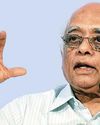
Bomb man who kept his mouth shut
The best thing about Rajagopala Chidambaram, who passed away recently, was that he “could keep his mouth shut”, as his mentor Raja Ramanna wrote in his memoir, Years of Pilgrimage. No wonder, he tested six atom bombs with no CIA, ISI or satellite spy eyes getting any wiser beforehand.
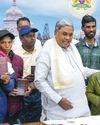
Extreme to mainstream
With the recent surrender of six Naxals, Chief Minister Siddaramaiah declares Karnataka almost “Naxal-free”. The BJP is questioning his “closeness” to the far left

SUMMITS, SURVIVAL AND SERVICE
Mountaineering expeditions play a crucial role in mountain warfare training
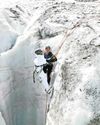
EYES ON THE ICE
THE INDIAN ARMY TRAINS ITS MOUNTAIN WARRIORS AT THE MACHOI GLACIER WHERE THEY LEARN ICE AND SNOW CRAFT IN SUB-ZERO TEMPERATURES. THE HIGH ALTITUDE WARFARE SCHOOL IN GULMARG PREPARES THEM FOR WARS THAT ARE DRIVEN BY TECHNOLOGY AND INTELLIGENCE. ON SNOW-COVERED BATTLEFIELDS LIKE THE HIMALAYAS, THE ARMY WANTS ITS JUNIOR LEADERSHIP TO BECOME DECISION-MAKERS AT THE TACTICAL LEVEL

Time to dream big
Every year, January 12 is celebrated as National Youth Day—as homage to the birth anniversary of Swami Vivekananda, honouring his enduring teachings and visionary ideas.

Climbing the power ladder
In his latest book, T.V. Paul explores India's search for its day in the sun as a global power
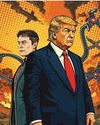
Howdy, rowdies
The world is already exhausted, and Donald Trump has not even begun his second term.

The going gets rough
It’s been a very macho fortnight
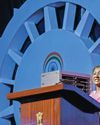
Eastward Ho!
Odisha, which hosted this year's Pravasi Bharatiya Divas, is emerging as a focal point for India's Act East Policy, given the turmoil in the northeast